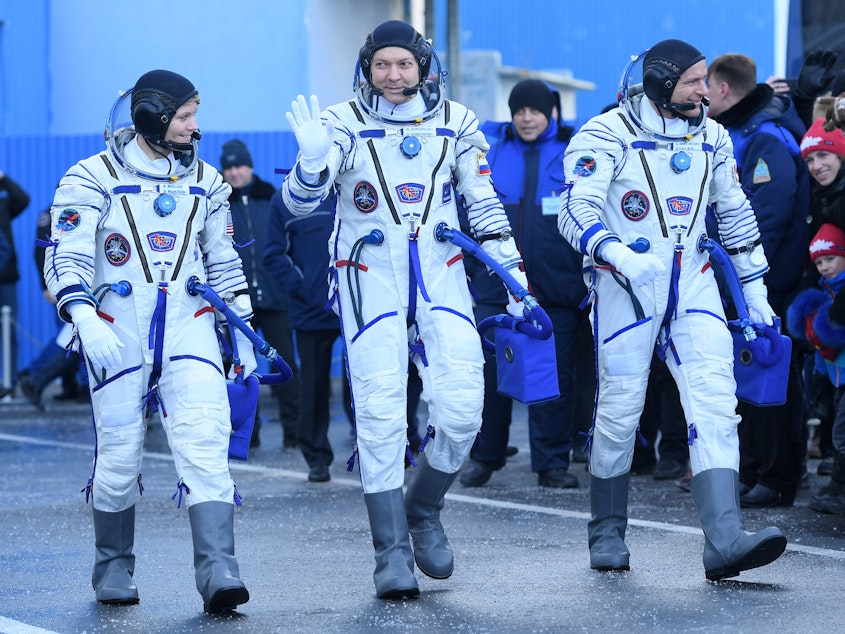Soyuz Rocket Launches, Docks Successfully To Relief Of NASA, Russia Space Agency

Updated at 3 p.m. ET
Nearly two months after a rocket malfunction forced NASA and the Russian space agency Roscosmos to abort the launch of a Soyuz mission, a new crew blasted off on Monday for the International Space Station and arrived safe and sound.
Russian cosmonaut Oleg Kononenko, American astronaut Anne McClain and Canadian astronaut David Saint-Jacques successfully launched at 6:31 a.m. ET from the Baikonur Cosmodrome in Kazakhstan and went into orbit a short time later.
The Soyuz successfully docked with the space station a few hours later, with the hatches between the two vessels opening shortly after 2:30 p.m. ET.
The mission is expected to last 194 days, according to TASS, which means the trio will remain on board through July 2019. The crew will join American Serena Auñón-Chancellor, Germany's Alexander Gerst and Russia's Sergey Prokopyev, all of whom are already living on the orbital station.
Speaking at a news conference on Sunday, the astronauts addressed concerns about the safety of the Russian-made rocket en route to the ISS, so closely on the heels of the previous rocket's emergency landing.
"We are psychologically and technically prepared for blastoff and any situation which, God forbid, may occur on board," said Kononenko, the 54-year-old crew commander, according to Radio Free Europe.
RFE also quoted McClain, 39, saying: "We feel very ready for it."
Last month, Roscosmos tweeted a video of the Oct. 11 failed Soyuz rocket launch that forced NASA astronaut Nick Hague and Russian cosmonaut Alexey Ovchinin into making a harrowing emergency landing.
Less than two minutes into that flight, one of the rocket's four external boosters failed to separate and accidentally struck the core stage of the rocket, sending it spinning out of control.
NASA astronaut Nick Hague and Russian cosmonaut Alexey Ovchinin ejected the capsule from the rocket when the spacecraft was about 50 kilometers — 31 miles — above Earth. The pair landed safely just outside the town of Dzhezkazgan in Kazakhstan. They were picked up by helicopters and then flown by a plane back to Baikonur.
Roscosmos later said the cause of the accident was a defective sensor.
Since NASA retired the space shuttle in 2011, Russian Soyuz rockets have been the only way to get people to the International Space Station.
As NPR's Bill Chappell reported in October, "The agency does have contracts with commercial companies like Boeing and SpaceX that are developing new vehicles to take astronauts up, but the first flights of those aren't scheduled until next year."
The existing ISS crew is supposed to get its ride back home in a Soyuz capsule that is docked to the station. That vehicle has a limited life span and expires in early January. [Copyright 2018 NPR]
